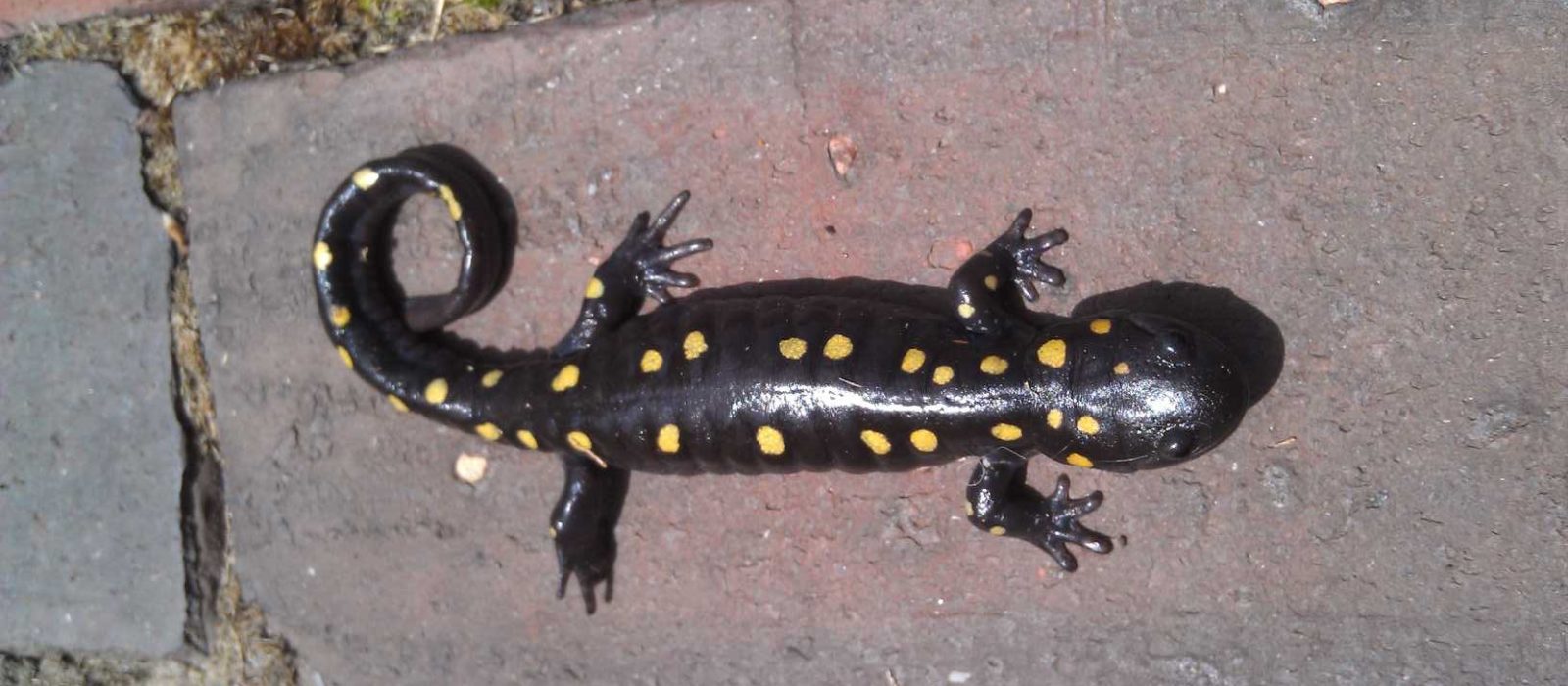SALAMANDERS, TOADS, AND FROGS: AMPHIBIA
Amphibians are often grouped together with reptiles under the term “herps” despite the fact that they are in different taxonomic classes: Reptilia for snakes and turtles, and Amphibia for salamanders, spadefoots, frogs, and toads. A total of 12 species of amphibians have been recorded on Martha’s Vineyard. Several species have extremely limited ranges here, the most fascinating example being the eastern spadefoot (Scaphiopus holbrooki). These animals only breed when their ephemeral breeding basins fill during heavy rainfall in the spring or early summer. It can be many years between breeding events.
The historical deforestation of the main island that occurred in the 1700-1900 period largely eliminated the habitats of most forest-dwelling species, especially salamanders, toads and spadefoots, and gray treefrog. Also, insecticide spraying in the 1940s and 1950s could have had a severe impact on frog and toad populations. No verfied breeding records of gray treefrog exist, but these treefrogs were heard calling in two different locations in the early summer of 2022. They could easily be transported to the island and may breed here one day. Naturalists should be listening in May and June for their calls and search for tadpoles to verify breeding, should it occur.
Some frogs prey on the tadpoles of their own or other species. Unfortunately, American bullfrogs are such a predator and have become a problem in many ponds. Bullfrog tadpoles have been introduced both knowingly and inadvertently from nurseries both on and off the island. Large populations have been present in Edgartown, Vineyard Haven, and West Tisbury for some time, and the species is established in Chilmark.
Surprisingly, there appear to be no amphibians at all on Nomans Land Island National Wildlife Refuge. Their absence is probably because the entire island was a sheep pasture and virtually treeless for most of the 1800s. Most of the ponds there now were man-made in the 1920s, and apparently no frogs were introduced. If there ever were salamanders, toads, or frogs in the small natural ponds, they appear to have died out.
Allan Keith; edited by Matt Pelikan, July 24, 2024
REFERENCES FOR AMPHIBIANS
DeGraaf, R. M. and D. D. Rudis. 1983. Amphibians and reptiles of New England.
University of Massachusetts Press. 85 pp.
Lazell, J. D. Jr. 1976. This broken archipelago – Cape Cod and the islands, amphibians
and reptiles. The New York Times Book Co. 260 pp.
Web Resources:
https://www.mass.gov/service-details/amphibians-and-reptiles-in-massachusetts Maintained by the Massachusetts Division of Fisheries and Wildlife, this page provides a county-level checklist for reptiles and amphibians in the state.
https://massherpatlas.org/amphibians_reptiles/index.html Based on a statewide atlas project coordinated by the University of Massachusetts, 1992-1998. Includes some life history information and identification aids.
